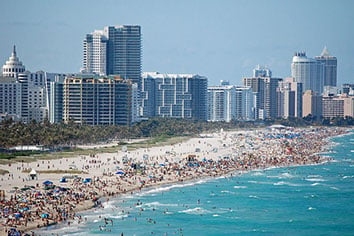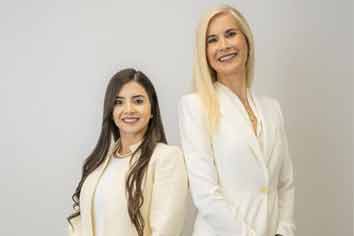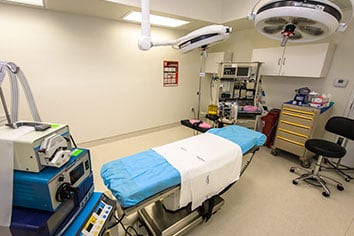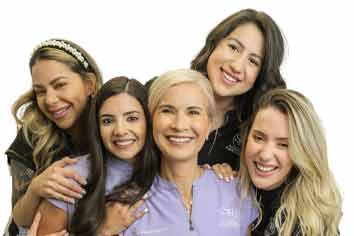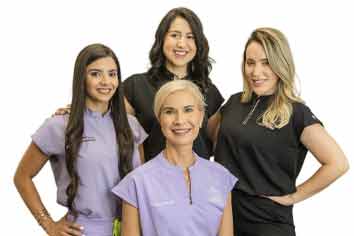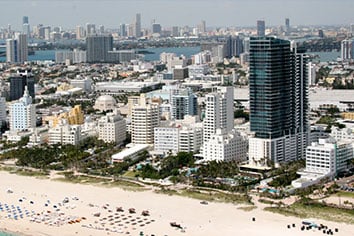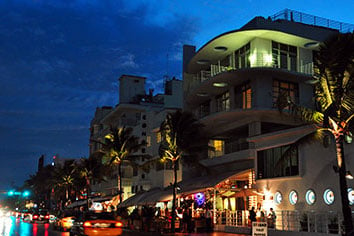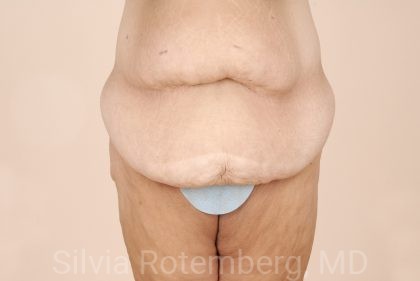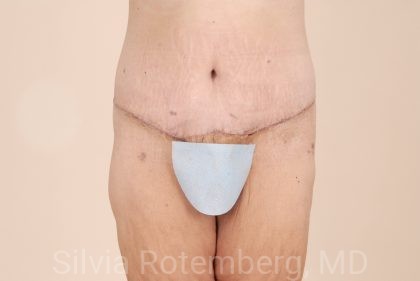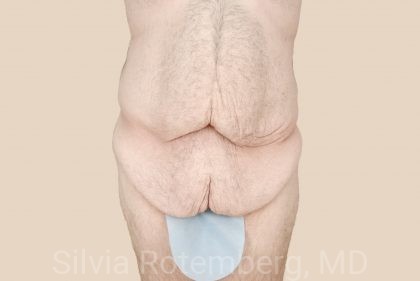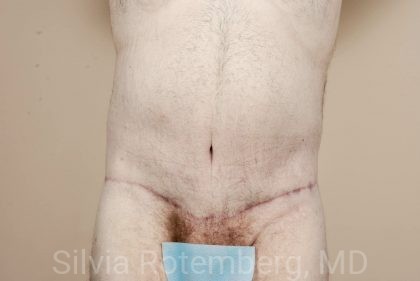The Cold Truth
When it comes to achieving a sculpted and toned physique, many individuals seek non-invasive solutions that can provide effective results without the need for surgery. One such popular procedure is CoolSculpting, a revolutionary fat-reduction treatment that has gained significant attention in recent years. However, amidst the buzz, concerns about safety naturally arise. In this blog post, we delve into the question on everyone’s mind: “Is CoolSculpting Safe?”
At Rotemberg Plastic Surgery, led by board-certified cosmetic and reconstructive plastic surgeon Dr. Silvia Rotemberg, residents of South Miami, FL, have access to a trusted and renowned practice that specializes in delivering exceptional results while prioritizing patient safety. With their expertise in cosmetic and reconstructive surgery, the team at Rotemberg Plastic Surgery stands at the forefront of modern aesthetic treatments, offering a comprehensive range of procedures tailored to meet individual needs.
To schedule a consultation or inquire further about CoolSculpting and other treatments available at Rotemberg Plastic Surgery, please reach out to our office at (305) 274-5170. Now, let’s explore the safety aspects of CoolSculpting and dispel any concerns you may have, allowing you to make an informed decision about this innovative body contouring technique.
To learn more about the safety of procedures and treatments offered in the Miami area, check out our blog!
Before and After Photos
How Does CoolSculpting Work?
During cryolipolysis (CoolSculpting), a specific type of cell in our body called adipocytes undergoes a natural cell death called apoptosis. This process is selective, targeting only the fat cells without affecting other cells or tissues nearby. [1]
After a CoolSculpting treatment, there are no immediate changes in the cells or tissue. However, within three days, evidence begins to appear showing that the fat cells are undergoing apoptosis and the body’s natural inflammatory response is activated. This response involves an increase in inflammatory cells in the treated area.
The inflammatory cells have an important job. They help the body respond to the cryolipolysis treatment by getting rid of the fat cells that have undergone cell death. These inflammatory cells, like macrophages, neutrophils, and lymphocytes, are part of our immune system. When the fat cells start to die off, these cells gather around them. Think of them as the body’s cleanup crew.
The macrophages, in particular, eat up the remnants of the dead fat cells through a process called phagocytosis. [2] They are like little Pac-Man cells, gobbling up the leftover debris.
Neutrophils and lymphocytes also help in this process. Neutrophils are the first responders when there is inflammation, and they help keep any potential infections under control. [3] Lymphocytes, on the other hand, help regulate the immune response and can aid in tissue repair and remodeling. [4]
All these inflammatory cells work together to clear away the remains of the fat cells and help reduce the inflammation in the treated area. They play a vital role in the body’s natural healing process, ensuring that the fat reduction achieved through cryolipolysis is effective.
After around 90 days, inflammation subsides, and when observed under a microscope, the fat layer visibly appears thinner. This indicates that the treatment has successfully reduced the thickness of the fat layer in the targeted area.
A Sweet Origin Story
Believe it or not, CoolSculpting has an intriguing origin story rooted in a simple observation involving popsicles! The concept behind CoolSculpting began to take shape when scientists noticed something peculiar: children who frequently enjoyed popsicles had a tendency to develop dimples in their cheeks over time. This led to the realization that cold temperatures could potentially target and reduce fat cells.
Inspired by this observation, a group of Harvard scientists, Drs. Dieter Manstein and R. Rox Anderson delved deeper into the phenomenon. Their research eventually led to the development of a groundbreaking procedure called cryolipolysis, the foundation of CoolSculpting.
The popsicle observation became the catalyst for exploring the potential applications of cold temperatures in non-invasive fat reduction. This innovative approach, which harnesses the power of controlled cooling, has revolutionized the field of aesthetic treatments, offering individuals a safe and effective way to contour their bodies without the need for surgery.
From a simple popsicle-eating observation to a scientifically-backed technique, CoolSculpting exemplifies how innovative ideas can arise from unexpected sources, leading to advancements that positively impact countless lives seeking a more sculpted physique.
What Areas Can CoolSculpting Safely Treat?
CoolSculpting is most commonly used to address the following areas:
- Abdomen – Teduce fat deposits in the abdominal area, including both the upper and lower abdomen.
- Flanks/Love Handles – Target and diminish excess fat on the sides of the torso, commonly referred to as love handles or flank area.
- Thighs – Treat inner and outer thighs to help contour and reduce fat in these regions.
- Upper Arms – Address unwanted fat in the upper arm area, commonly known as “bat wings.”
- Double Chin – Reduce submental fat, the fat located beneath the chin, for a more defined jawline.
- Back and Bra Fat – Target fat pockets on the back, including the area around the bra line.
- Underneath the Buttocks – CoolSculpting can help address the fat deposits beneath the buttocks, known as the “banana roll.”
Unveiling the Safety Profile of CoolSculpting
Initially, CoolSculpting received approval from the United States Food and Drug Administration (FDA) in 2008 for the treatment of localized fat deposits in the flanks. Subsequently, in 2011, the FDA expanded its approval to include the treatment of abdominal lipodystrophy, a condition characterized by abnormal fat distribution in the abdomen. In 2018, the FDA cleared CoolSculpting treatments for under the chin and for patients with a BMI of 46.2 or lower. [5]
Cryolipolysis is generally considered a safe procedure, and any side effects that may occur are typically temporary and resolve on their own within two weeks after treatment. These side effects include swelling, bruising, redness, and temporary nerve-related discomfort. In a study analyzing medical records of over 500 cryolipolysis patients, only three patients reported mild to moderate pain or nerve-related issues, and no serious adverse events were reported. [6]
Although cryolipolysis has a low risk of serious side effects, there have been rare cases of paradoxical adipose hyperplasia (PAH) reported. Out of approximately 650,000 cryolipolysis treatments, only 33 cases of PAH have been documented. PAH refers to an abnormal increase in fat tissue at the treatment site, which becomes visibly larger. These cases are very uncommon, with only 0.14% of the patients in clinical reports (covering 1445 patients) experiencing PAH. [7]
Understanding Paradoxical Adipose Hyperplasia (PAH)
The exact cause of PAH is not fully known, and only a limited number of studies have investigated it. Researchers have examined the affected tissue both at a macroscopic (larger scale) and microscopic (cellular level) level.
Using magnetic resonance imaging (MRI), scientists have observed that the tissue treated with cryolipolysis can actually increase in size. This growth is accompanied by changes in the organization of fat cells, the thickening of tissue partitions around fat globules, and an increase in the formation of blood vessels within the treated tissue.
While PAH is a rare occurrence, the scientific community remains committed to further exploring its underlying mechanisms. The goal is to gain a better understanding of PAH and to minimize any potential risks associated with cryolipolysis, ensuring the safety and effectiveness of the procedure.
Is CoolSculpting Worth It?
The popularity of cryolipolysis as a non-invasive fat reduction procedure is clearly evident, as reflected in the increasing number of procedures being performed. According to the American Society for Aesthetic Plastic Surgery, a total of 357,938 non-invasive fat reduction procedures were carried out in 2020 alone, highlighting the growing demand and acceptance of this treatment modality. [8]
Studies have provided substantial evidence of the effectiveness of cryolipolysis in reducing fat deposits in specific body areas. In one study focusing on abdominal fat deposits, ultrasound imaging revealed an average fat reduction of 19.6% after six months of cryolipolysis treatment. This finding underscores the long-term efficacy of the procedure in achieving noticeable fat reduction. [9]
Furthermore, another study conducted on patients treated in various body regions, including the abdomen, bra rolls, back rolls, hip rolls, inner thighs, and knees, demonstrated an average reduction of 21.5% in fat deposits. This comprehensive evaluation of multiple body areas further supports the effectiveness of cryolipolysis in achieving significant fat reduction results. [9]
These scientific studies, along with the increasing number of procedures being performed and the positive patient outcomes observed, provide compelling evidence to support the effectiveness and appeal of cryolipolysis as a non-invasive fat-reduction treatment option.
Your CoolSculpting Consultation in South Miami, FL
At Rotemberg Plastic Surgery, your safety is our utmost priority. We believe in providing a comprehensive and personalized consultation to ensure that your journey towards body contouring and fat reduction is not only effective but also conducted with the highest level of safety standards.
During your personal consultation, Dr. Rotemberg will conduct a thorough assessment of your medical history, current health status, and any specific concerns you may have. She understands that everyone’s health profile is unique, and it is essential for her to have a clear understanding of the candidate’s medical background to determine the most suitable treatment approach.
We will take the time to explain the cryolipolysis procedure in detail, addressing any safety-related questions or concerns you may have. Our experienced team will discuss the inherent safety measures incorporated into the cryolipolysis technique, as well as the precautions taken throughout the treatment process to ensure your well-being.
Schedule your personal consultation with us today, and let our experienced team guide you toward safe and effective body contouring. We are committed to delivering outstanding results while prioritizing your safety every step of the way. Call (305) 274-5170 today!
References
- Seaman SA, Tannan SC, Cao Y, Peirce SM, Gampper TJ. Paradoxical Adipose Hyperplasia and Cellular Effects After Cryolipolysis: A Case Report. Aesthetic Surgery Journal. 2015;36(1):NP6-NP13. https://doi.org/10.1093/asj/sjv105
- Arandjelovic S, Ravichandran KS. Phagocytosis of apoptotic cells in homeostasis. Nature Immunology. 2015;16(9):907-917. https://doi.org/10.1038/ni.3253
- Rosales C. Neutrophil: A Cell with Many Roles in Inflammation or Several Cell Types? Frontiers in Physiology. 2018;9(113). https://www.ncbi.nlm.nih.gov/pmc/articles/PMC5826082/
- D’Alessio FR, Kurzhagen JT, Rabb H. Reparative T lymphocytes in organ injury. Journal of Clinical Investigation. 2019;129(7):2608-2618. https://doi.org/10.1172/jci124614
- plc A. Allergan Receives FDA Clearance To Treat Area Below The Jawline With CoolSculpting®. www.prnewswire.com. Published 2018. Accessed May 23, 2023. https://www.prnewswire.com/news-releases/allergan-receives-fda-clearance-to-treat-area-below-the-jawline-with-coolsculpting-300724198.html
- W. Grant Stevens, MD, FACS and others, Broad Overview of a Clinical and Commercial Experience With CoolSculpting, Aesthetic Surgery Journal, Volume 33, Issue 6, August 2013, Pages 835–846, https://doi.org/10.1177/1090820X13494757
- Jalian HR, Avram MM, Garibyan L, Mihm MC, Anderson RR. Paradoxical Adipose Hyperplasia After Cryolipolysis. JAMA Dermatology. 2014;150(3):317. https://doi.org/10.1001/jamadermatol.2013.8071
- American Society of Plastic Surgeons. PLASTIC SURGERY STATISTICS REPORT 2020.; 2020. https://www.plasticsurgery.org/documents/News/Statistics/2020/plastic-surgery-statistics-full-report-2020.pdf
- Gordon H. Sasaki, MD, FACS and others, Noninvasive Selective Cryolipolysis and Reperfusion Recovery for Localized Natural Fat Reduction and Contouring, Aesthetic Surgery Journal, Volume 34, Issue 3, March 2014, Pages 420–431, https://doi.org/10.1177/1090820X13520320





